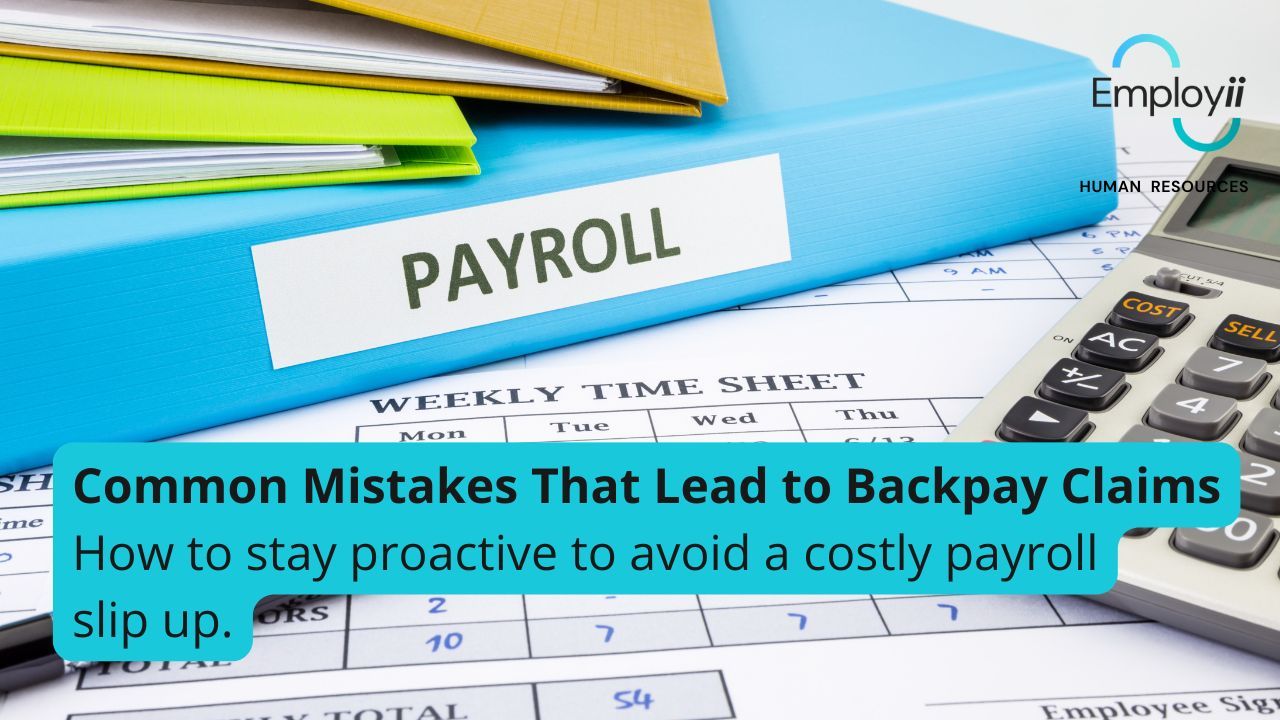
Common Mistakes That Lead to Backpay Claims
Nov 26, 2025In the 2024-25 financial year, the Fair Work Ombudsman (FWO) reclaimed $358 million in unpaid wages for over 249,000 underpaid Australian workers.
Backpay claims continue to be one of the most common (and costly) compliance issues facing Australian employers. Even well-intentioned businesses can find themselves owing thousands in underpayments simply because small mistakes went unnoticed for too long.
Here are five payroll compliance red flags to look out for that often lead to Fair Work disputes, audits, and significant backpay bills.
1. Inaccurate Classification of Employees
Misclassifying an employee under the wrong Award, Level, or Employment Type (casual, part-time, full-time) is one of the biggest triggers for underpayment.
Common mistakes:
- “Level 1” vs “Level 2” duties becoming blurred.
- Employees performing higher-duties tasks without appropriate payment.
- Treating long-term casuals as if they’re part-time, without the entitlements.
Why it matters: A single misclassification can impact hourly rates, penalty rates, allowances, and overtime calculations, quickly snowballing into significant backpay.
2. Not Keeping Accurate Time and Attendance Records
Under Fair Work legislation, employers must keep complete and accurate records, including start times, finish times, breaks, and overtime hours.
Common mistakes:
- Using manual timesheets filled out “from memory”.
- Auto-populating standard hours instead of recording actual hours worked.
- Missing or incomplete records (e.g., no evidence of breaks.)
Why it matters: Without accurate records, Fair Work will typically accept the employee’s version of hours worked, meaning the employer often ends up paying more during disputes.
3. Ignoring Award Updates and Annual Rate Changes
Awards are updated every 12 months, usually from 1 July. Many also have ad-hoc changes announced throughout the year.
Common mistakes:
- You haven’t reviewed your employees’ rates in the past year.
- You rely on outdated printed Awards or old internal documents.
- You assume payroll software updates automatically (it doesn’t always!)
Why it matters: Even a 1% to 5% outdated rate can accumulate into thousands across a team especially when applied to overtime or penalty loadings.
4. Failing to Apply Penalty Rates or Overtime Correctly
Penalty rates and overtime rules vary significantly across awards and industries. Incorrect assumptions often lead to widespread underpayments.
Common mistakes:
- Paying flat rates for late nights or weekends.
- Assuming all employees agree to “time off in lieu” when they may not.
- Overtime not triggered after the maximum ordinary hours per shift/day.
Why it matters: Penalties and overtime can be 25% to 150% above base rates. Missing these is one of the fastest ways to rack up backpay liabilities.
5. Unpaid or Incorrectly Paid Allowances
Many awards require specific allowances that employers may accidentally overlook, such as:
- Uniform and laundry allowances
- Tool or equipment allowances
- Travel or meal allowances
- First aid or leading-hand allowances
Common mistakes:
- Employees frequently working in conditions requiring additional allowances.
- Changing job functions without updating allowances.
- No regular review of award-mandated payments.
Why it matters: These allowances are compulsory. If they’re missing from payslips, the business may be non-compliant—and employees can claim backpay for every missed week.
How to Stay Compliant and Avoid Backpay Claims
A proactive approach is always better than a backpay investigation. Make sure you:
- Review classifications and Awards annually;
- Conduct regular payroll audits;
- Use reliable time-tracking systems, not assumptions;
- Keep thorough, compliant records;
- And monitor Fair Work announcements throughout the year.
If you're still unsure of any of the above or need help implementing a strong system then get in touch with us at [email protected]. We help businesses stay compliant, confident, and stress-free by implementing practical HR and payroll solutions tailored to Australian workplaces.
Authored by RG (Employii Human Resources)

